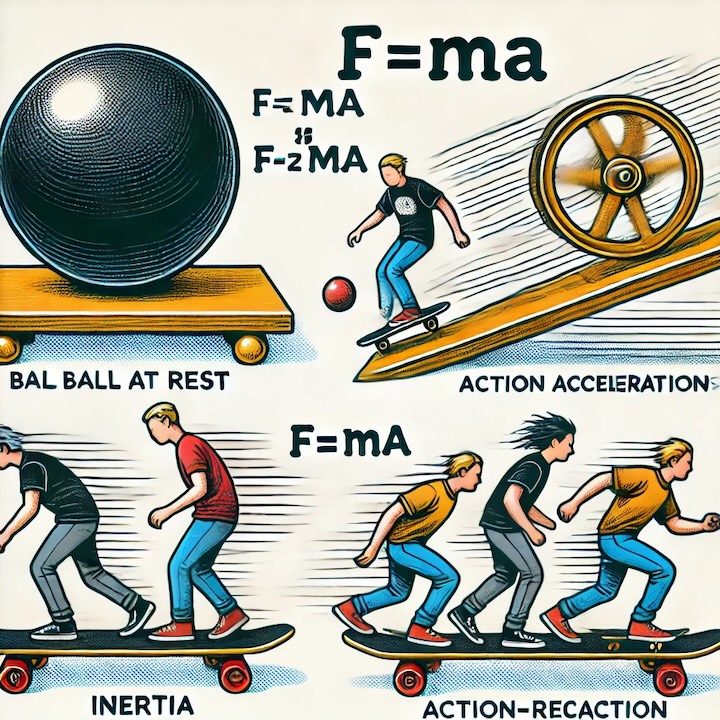
In 1687 Newton founded the study of mechanics. The underlying basis was Newton's three laws of motion. One of them his principal of universal gravitation stated that two bodies attract each other with a force proportional to the product of their masses and inversely proportional to the square of the distance between them.
In 1687, Isaac Newton revolutionized the field of mechanics with the publication of his groundbreaking work Philosophiæ Naturalis Principia Mathematica (commonly referred to as the Principia). This text laid the foundation for classical mechanics, establishing a set of principles that would dominate the understanding of physical laws for centuries to come. At the core of Newton’s contributions were his three laws of motion, which describe how objects behave when subjected to forces, and his principle of universal gravitation, which describes the force that governs the motion of celestial bodies and objects on Earth alike.
Newton’s first law of motion, often referred to as the law of inertia, states that an object at rest will remain at rest, and an object in motion will continue in a straight line at a constant velocity unless acted upon by an external force. This was a revolutionary idea in Newton’s time, as it challenged the Aristotelian belief that an object would naturally come to a stop unless continuously pushed by a force. Newton’s first law helped explain why planets move in elliptical orbits rather than falling into the sun. It was the basis for understanding that objects in motion will remain in motion unless an external force—such as friction or gravity—intervenes.
The second law of motion is perhaps the most well-known and forms the foundation of classical mechanics. It states that the force applied to an object is equal to the mass of that object multiplied by its acceleration (F = ma). This law quantitatively describes how objects respond to forces. If an object has a greater mass, it will require more force to accelerate it at the same rate as an object with less mass. Newton’s second law is fundamental to everything from calculating the energy needed to launch a spacecraft to understanding the dynamics of a falling apple.
Newton’s third law of motion is encapsulated in the simple statement: “For every action, there is an equal and opposite reaction.” This law explains that when one body exerts a force on another, the second body exerts a force of equal magnitude but in the opposite direction on the first body. This principle is evident in many everyday phenomena, from the recoil of a gun when fired to the way a swimmer propels themselves through water.
One of Newton’s most far-reaching insights was his principle of universal gravitation. Newton proposed that every object in the universe exerts a gravitational force on every other object. This force is proportional to the product of the masses of the two objects and inversely proportional to the square of the distance between them. In simple terms, the closer two objects are, or the more massive they are, the stronger the gravitational pull between them. This law not only explained why objects fall to the ground but also why the planets orbit the sun, why the moon orbits the Earth, and even the motion of distant stars and galaxies.
The universal law of gravitation marked a major leap in humanity’s understanding of the cosmos. For the first time, there was a unifying theory that explained both terrestrial and celestial phenomena. Newton showed that the same force that causes an apple to fall from a tree also governs the motion of planets in space. This was a key achievement of the scientific revolution and laid the groundwork for future discoveries in physics and astronomy.
In conclusion, Newton’s three laws of motion and the principle of universal gravitation established a new framework for understanding the natural world. These principles provided scientists and engineers with the tools to predict the motion of objects with remarkable precision. Newton’s work remains a cornerstone of classical mechanics, influencing fields as diverse as astronomy, engineering, and space exploration. His laws continue to be taught and applied in various scientific and technological disciplines, underscoring their enduring significance in the study of physics.
 >
>